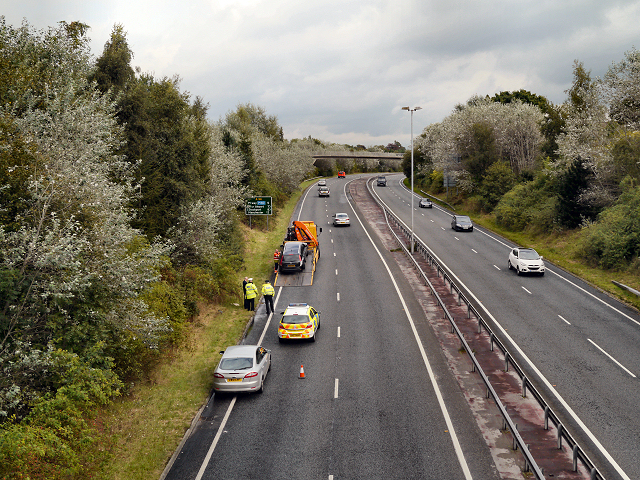Breaking down is always a huge inconvenience; but it’s particularly troublesome if you’re travelling on the motorway. We’ve got a few tips to help if you ever find yourself in that unfortunate situation.
Prior to setting off
- It’s important to prepare your vehicle prior to setting off. It’s much easier to stop something happening in the first place, than having to repair the damage (and normally a lot cheaper). Before any long distance trip you should check your oil and water levels, as well as checking your tyres are inflated correctly.
- Do you have breakdown cover? Although you think you might not need it, it’s better to be protected in case of an emergency. The last thing you need when you’ve broken down is to pay a call out fee for a local mechanic (and possibly a £250+ towing fee)
- It’s worth having a road map in your car as it’s important to be able to explain where you are if you need to ring for assistance. Sat-navs are great, but they rely on signal, which isn’t always accessible. They also use batteries or require being charged up.
- Make sure you charge your phone before setting off. Better still, take a car adapter for your charger. You don’t know how far away you’ll be from the nearest phone if you were to breakdown.
- If you’re travelling regularly, it’s worth keep a raincoat and some warm clothes in your boot. If you do breakdown in the middle of winter and you’ll be thankful you packed them.
If you breakdown
- As soon as you notice any problems it’s important to head to the inside lane. If the problems persist or worsen, it’s crucial that you can pull into the hard shoulder. Look out for warning lights, strange sounds or unusual behaviour from your car when driving. If you’re unsure, pull into your nearest Moto where you’ll be able to safely inspect the car.
- If you breakdown all of a sudden and can’t reach the hard shoulder, you need to be very careful. Immediately put your hazards on and call for assistance; either the police, Highways England, Traffic Scotland or Traffic Wales.
- If you do make it to the hard shoulder, make sure everyone exits from the left hand side. Turn the wheel towards the left hand side verge also. If traffic were to hit your car, this would help stop your car going into the carriageway.
- Put your sidelights and hazards on; you want to make your car as visible as possible.
- Find a safe place for you and your passengers to wait. Being hit by traffic is your greatest risk, so the further away from the motorway you are, the better.
- It’s advised to leave pets inside your vehicle, although that may seem unfair, it is much more dangerous if they were on the side of the motorway and spooked by the noise and speed of the traffic, potentially causing them to run away.
- Even if the problem with the car is a simple one, don’t try to fix it yourself as it’s too dangerous. Wait for someone to come to assist you who is trained with fixing cars on the motorway.
- If the situation is an emergency and there’s potential damage to you or your vehicle, call the police. If you are not in immediate danger, contact your breakdown provider or the motorway operator.
- When calling for assistance you can use the drive location signs; there’s a handy article here from our friends at the AA that explains how to read them properly. They’ll help you describe your location as accurately as possible.
- If you don’t have a mobile (or it ran out of battery), you’ll find emergency phones are situated every 1 mile. These phones are free and you’ll see markers across the hard shoulder telling you the distance and direction to your nearest one.
Rejoining the motorway
- Make sure your car is now 100% and you feel confident to drive it.
- It’s important to build up the correct amount of speed before joining the motorway traffic.








